Samsung Announces The Galaxy S20, S20+ and S20 Ultra: 120Hz, 5G, Huge Batteries, Crazy Cameras and $$$
by Andrei Frumusanu on February 11, 2020 2:00 PM EST- Posted in
- Mobile
- Samsung
- Smartphones
- Exynos 990
- Snapdragon 865
- Galaxy S20

The year is 2020. The 20’s are back (we’ll see if they’ll be roaring or not), and not only is it a new decade, but it’s also time for a new enumeration scheme for Samsung’s newest Galaxy S devices; Today Samsung is announcing the new Galaxy S20, S20+ and S20 Ultra flagship phones. The new phones have some similarities in the external design to last year’s S10 line-up and a clearly a successor – but in terms of specifications and hardware capabilities, it’s one of Samsung’s largest ever updates.
The new trio of devices shake things up again compared to what we’ve seen in last year, and there’s a different positioning at the low- and high-end of the series. The S20 and S20+ are relatively straightforward successors to the S10 and S10+, however the lower end S10e sees no continuation, with Samsung instead opting for a super-high-end premium model in the form of the S20 Ultra – a literal behemoth of a phone.
The hardware updates this year are massive: This is Samsung’s first year where 5G connectivity comes as a standard feature for all models of the line-up (There are still some 4G variants depending on markets), featuring the newest Snapdragon 865 and Exynos 990 SoCs and their corresponding new generation modems. The phones now come with a 120Hz refresh rate screen all while retaining 1440p resolution on all models, and we’ve seen some substantial upgrades in terms of battery capacities to be able to power the new SoCs, 5G connectivity, and new display.
The biggest upgrade and key focus point of the new S20 series however is the new camera configurations and setups. This is Samsung’s first time in several years that the company has opted to go for bigger camera sensors, and while there’s still “only” three cameras for the models in the line-up, they are completely revamped in their designs and have very little to do with their past brethren. The new S20 Ultra even goes a step further in terms of differentiation and now comes with a gargantuan 108MP main camera sensor as well with what Samsung describes a “100x Super Zoom” telephoto module that’s enabled by a prism optics right-angle mounted sensor setup. The camera improvements are numerous, and we’ll go into detail of each of them in just a bit.
| Samsung Galaxy S20 Series | ||||
| Galaxy S20 (5G & 4G) |
Galaxy S20+ (5G & 4G) |
Galaxy S20 Ultra 5G |
||
| SoC | (North America, China, Japan) Qualcomm Snapdragon 865 1x Cortex-A77 @ 2.84GHz 3x Cortex-A77 @ 2.42GHz 4x Cortex-A55 @ 1.80GHz Adreno 640 @ 587MHz |
|||
| (Europe & Rest of World) Samsung Exynos 990 2x Exynos M5 @ 2.73GHz 2x Cortex-A76 @ 2.50GHz 4x Cortex-A55 @ 2.00GHz Mali G77MP11 @ ? MHz |
||||
| Display | 6.2-inch 3200 x 1440 (20:9) |
6.7-inch 3200 x 1440 (20:9) |
6.9-inch 3200 x 1440 (20:9) |
|
| SAMOLED HDR10+ 1200nits peak brightness 120Hz Refresh Rate (@FHD+ software rendering) |
||||
| Dimensions | 151.7 x 69.1 x 7.9 mm 163 grams |
161.9 x 73.7 x 7.8 mm 187 grams |
166.9 x 76.0 x 8.8 mm 220 grams |
|
| RAM | 8 GB (LTE) 12 GB (5G) |
8 GB (LTE) 12 GB (5G) |
12 / 16 GB | |
| NAND Storage |
5G = 128 GB LTE = 128 GB + mSD |
5G = 128-512 GB LTE = 128 GB + mSD |
16 GB model = 512 GB 12 GB = 256 or 512 GB + microSD |
|
| Battery | 4000mAh (15.4Wh) typ. 3880mAh (14.93Wh) rated |
4500mAh (17.32Wh) typ. 4370mAh (16.82Wh) rated |
5000mAh (19.25Wh) typ. 4855mAh (18.69Wh) rated |
|
| 15W Wireless Charging | ||||
| 25W Fast Charging |
45W Super Fast Charging |
|||
| Front Camera | 10MP 4K video recording F/2.2, 80-degree |
40MP 4K video recording F/2.2, 80-degree |
||
| Primary Rear Camera | 79° Wide Angle 12MP 1.8µm Dual Pixel PDAF |
79° Wide Angle 108MP 0.8µm DP-PDAF 3x3 Pixel Binning to 12MP 8K24 Video Recording |
||
| fixed f/1.8 optics OIS, auto HDR, LED flash 4K60, 1080p240, 720p960 high-speed recording |
||||
| Secondary Rear Camera |
76° Wide Angle (Cropping / digital zooming telephoto) 64MP 0.8µm F/2.0 optics, OIS 8K24 Video Recording |
24° Telephoto (5x optical magnification) 48MP 0.8µm F/3.5 prism optics, OIS |
||
| Tertiary Rear Camera |
120° Ultra-Wide Angle 12MP 1.4µm f/2.2 |
|||
| Extra Camera |
- | Time of Flight (ToF) 3D Sensor | ||
| 4G / 5G Modem |
||||
| Snapdragon 5G - Snapdragon Modem X55 (Discrete) (LTE Category 24/22) DL = 2500 Mbps - 7x20MHz CA, 1024-QAM UL = 316 Mbps 3x20MHz CA, 256-QAM (5G NR Sub-6 + mmWave*) DL = 7000 Mbps UL = 3000 Mbps *Depending on region and model |
||||
| Exynos 5G - Exynos Modem 5123 (Discrete) (LTE Category 24/22) DL = 3000 Mbps 8x20MHz CA 1024-QAM UL = 422 Mbps ?x20MHz CA, 256-QAM (5G NR Sub-6) DL = 5100 Mbps |
||||
| Exynos 4G - ???? (Discrete) LTE Category 20/13 DL = 2000 Mbps, 7x20MHz CA UL = 200 Mbps |
||||
| SIM Size | NanoSIM + eSIM | |||
| Wireless | 802.11a/b/g/n/ac/ax 2x2 MU-MIMO, BT 5.0 LE, NFC, GPS/Glonass/Galileo/BDS |
|||
| Connectivity | USB Type-C no 3.5mm headset |
|||
| Special Features | Under-screen ultrasonic fingerprint sensor | |||
| (Qualcomm QC 2.0, Adaptive Fast Charging, USB-PD), reverse wireless charging (WPC & PMA), IP68 water resistance |
||||
| Launch OS | Android 10 with Samsung OneUI 2.0 | |||
| Launch Prices | 128GB 5G: $999 / 999€ / £899 |
128GB 5G: $1199 / 1099€ / £999 512GB 5G: $1299 / 1249€ / n/a £ |
128GB 5G: $1399 / 1349€ / £1199 512GB 5G: $1499 / 1549€ / £1399 |
|
| 4G variants for 100€ / 100£ cheaper available only in certain markets |
5G only | |||
Snapdragon 865 & Exynos 990 - Next Gen-SoCs as The Brain of the Phones
At the heart of the S20 series we find Qualcomm’s new Snapdragon 865 SoC as well as Samsung’s Exynos 990 chip. The Snapdragon 865 is a straightforward follow-up to the Snapdragon 855 that powered the vast majority of mobile devices in 2019 in an excellent manner. The new chip comes with a slightly updated manufacturing process and sports Arm’s newest Cortex A77 CPU cores which bring a 25% performance through microarchitectural updates, and an updated GPU sporting a 20% performance uplift. We’ve covered the Snapdragon 865 more extensively in our performance preview piece, and we’re sure the Galaxy S20 models using this chipset variant will give excellent experiences for 2020.
European costumers (and maybe others?) will see the new Exynos 990 chip being used. We don’t know too much about the chip’s performance, but it sports 2x new Samsung M5 CPU cores at 2.73GHz alongside 2x Cortex A76 cores at 2.5GHz and 4x Cortex A55 cores at 2GHz. On the GPU side, we see the brand-new Arm Mali-G77 in a 11-core configuration at yet undisclosed clocks. Samsung had claimed the CPU performance is 20% higher than that of the Exynos 9820, and first leaked benchmarks does put it roughly around the same level as the Cortex A77 cores of the Snapdragon 865 – of course this is all to be confirmed once we get our hands on the chip. There’s a more generational gap in terms of process node here between the S10 and S20 as we see the transition from 8nm to 7nm EUV – it would be more similar to the Exynos 9825 of the Note10, it will be interesting how power efficiency ends up at this year and how both Exynos and Snapdragon versions of the Galaxy S20 will fare against each other.
Both chips bring with them massive upgrades in their imagine signal processors as well as their neural processing units, significantly increasing the processing power that’s required to operate the S20’s new complex camera systems.
5G Becomes Mainstream - At Least For Some Markets And Variants
Common between both chipset variants is the introduction of 5G connectivity that’s enabled by new discrete modems on both platforms. Qualcomm says that the Snapdragon 865 exclusively comes with the new X55 5G modem and it’s likely we’ll be seeing this being deployed in the majority of leading 5G markets such as the US and China, maybe even South Korea. The Exynos models however also have 5G connectivity thanks to the new Exynos Modem 5123 and these variants will be prevalent in European markets.
At this moment it’s still unclear what S.LSI’s situation is on mmWave– we know that the company has solutions that they claim as being planned for adoption in 2020, but until Samsung confirms S20 variants with the functionality it’s something we currently can only speculate on. The vast majority of markets haven’t even begun licensing out mmWave spectrum, much less deploy it. At the time of writing, it’s also unclear whether all Snapdragon variants of the S20 will feature mmWave modules, or if we’ll be seeing a segmentation between sub-6 only models and sub-6+mmWave models depending on country or region. One thing that is clear is that Samsung is not completely abandoning 4G only variants of the S20 series, as these will still be launched in markets lagging in 5G adoption. These variants seemingly will feature the Exynos chip, but we’re unclear whether it’ll come with a different modem, or if it’ll simply just lack the corresponding 5G RF system that’s required for connectivity.
Iterative Redesigns For S20 & S20+, New Behemoth S20 Ultra Form-Factor
In terms of design, the S20 and S20+ are iterative to their predecessors, with Samsung now tweaking the bezel situation as well as elongating the form-factor. All the new phones come with a 3200 x 1440 resolution display which results in a 20:9 aspect ratio, slightly longer than the 19:9 aspect ratio of the S10 series. The new 6.2” and 6.7” screen diagonals of the S20 and S20+ shouldn’t scare you off in thinking that the phones have majorly changed their form-factor, in fact, the width of the new models is actually narrower than the S10 and S10+ - it’s only in the length that the new phones have grown in size, meaning it should largely still have similar ergonomics. Thickness is the same as well, but the phones are a little bit heavier by 6 and 13 grams respectively, while still being relatively reasonable on the scale at 163g and 187g.
As mentioned, the new screen is elongated in terms of its form-factor, but it’s not the only thing that has changed, as Samsung is using a brand-new panel technology allowing for higher efficiency as well as native 10-bit colour displaying. The biggest feature though is the new screen’s ability to work at a 120Hz refresh rate, doubling up on fluidity compared to the regular 60Hz. We hadn’t been briefed by Samsung as to how this works exactly, but pre-release reports had shown that the 120Hz mode is only possible when the phone is rendering in 1080p/FHD+ mode, and doesn’t have the ability to use 1440p at 120Hz. Whilst we have yet to confirm this, this would be a rather big compromise in terms of experience. 1080p rendering on a 1440p panel still look relatively good, but it’s not as sharp as native 1440p rendering. It’s likely that Samsung has had to opt for this route for power efficiency reasons – well have to dwell more into the topic once we get our hands on a device.
The biggest visual change at the front of the phone is Samsung’s new screen and punch-hole design. Compared to the S10 series, Samsung has moved the front-camera punch-hole to the middle of the screen, similar to the layout of the Note10 series. While Samsung had already been able to reduce the size of the punch-hole in the Note10, it’s even smaller now on the S20 series, allowing for a much smaller notification bar at the top of the screen as the much smaller cut-out now wastes less space compared to previous iterations. Because it’s only a single camera at the front for all models, much like on the Note10 series, we see discontinuation of dual-camera “pill” setup found on the S10+ and S10 5G.
Continuing on the differences in design, the bezels and frame of the phone is more similar to that of the S10 5G than the S10 series. We now see a much thinner metal frame on the sides of the phone as the back glass is curving more significantly to the sides. In teardowns of the S10 5G we’ve seen that Samsung did this in order to house the mmWave modules on the sides without them being obstructed by the metal frame, so I’m expecting a similar internal design on the S20’s.
Another major redesign this year is that Samsung has moved all buttons to the right side of the phone. The company had already done this move on the Note10 series – only there we had them all on the left side. The right sight probably makes more sense for the majority of users. Similarly to the Note10, we see the disappearance of the dedicated Bixby assistant button which now is integrated into the power button (officially the “side button” now) of the S20 in its functionality by double tapping or holding it pressed.
The Galaxy S20 Ultra is a different phone compared to what we’ve seen in the past. In terms of footprint, it’s larger than the S20+ by 2.3mm in width and 5mm in height – it doesn’t sound too much but it’s larger than the Note10+. It’s a bit narrower than the S20 5G so that should make it more reasonable to handle, but still quite taller. What puts the S20 Ultra in a class of its own is that it’s 8.8mm thick and weighs in at 220g, making it quite a bit heavier than the S10 5G which came in at 198g last year. It’s to be noted that while this is quite heavy for a Samsung device and a lot more than users would be used to, it’s still 6g lighter than the 226g iPhone 11 Pro Max.
The weight increases for the line-up should be related to the increase battery capacities of the phones. The S20 comes with a 4000mAh unit, the S20+ falls in at 4500mAh, and the S20 Ultra features a large 5000mAh battery. All figures are typical capacities, rated capacities should be slightly smaller. The new capacities represent 17.6% and 9% increases over the S10 and S10+ models, which means that the new smaller model will be seeing a larger battery life increase between generations, which should make users who prefer the smaller models very happy.
Cameras: 12MP, 48MP, 64MP, 108MP Across Modules And Devices
As mentioned, the biggest features of the S20 series are its cameras, and it’s the biggest upgrade we’ve ever seen in a Samsung device, revamping all sensors and modules across the range. Starting off with the Galaxy S20 and S20+, both of while share the same triple-camera setup:
The main camera sensor on both phones remains a 12MP unit in terms of resolution, however Samsung is now using a new generation sensor that is physically larger in size. The pixel pitch has grown from 1.4µm to 1.8µm, meaning the new sensor has a 65% larger area and corresponding better light capture ability. I’m actually expecting the sensor to showcase a lot better electrical characteristics – although it hadn’t be discussed by S.LSI yet, the new generation of sensors for the first time employ dual gain converters to extend the full-well-capacity of each pixel, in theory doubling the dynamic range of the sensor. We don’t have confirmation if the S20 uses these sensors, but given Samsung’s showcase of such 64MP and 108MP sensors at IEDM last year, I feel it’s very likely does sport the new features in the new sensors.
In terms of optics, it looks like Samsung has abandoned its dual-aperture system in favour of a fixed f/1.8 optics system. It’s likely that because the new sensors are much larger in size, that the company required more Z-height in the optics system for the larger lenses, and the dual-aperture was a victim and compromise versus increasing the size of the camera bump at the back of the phones (Which by the way, did have to increase this generation). The module has OIS as expected.
The most interesting camera of the whole S20 series for me isn’t actually the 108MP module of the S20 Ultra which we’ll cover in a bit, but rather the 64MP second unit of the regular S20 phones. The important aspect here is that this isn’t a telephoto unit in terms of its optics, as it still has a 76° wide field of view which is only ever so slightly narrower than the primary camera’s 79° FoV. Of course, because this unit has quadruple the resolution, at 12MP resulting images the module could in theory crop to a 4x magnification compared to the main sensor. I think another reason for Samsung choosing to go this route is that it would be possible to record 8K video with this sensor, as the 12MP main unit doesn’t have sufficient resolution to achieve this.
The possibilities and flexibility that Samsung has on this module and sensor configuration is actually quite large, I’m wondering if the phone would be able to capture native 64MP wide-angle or even 16MP wide-angle images with the module. The pixel pitch here is very small at 0.8µm and matches the description of the sensors that Samsung had disclosed at IEDM, so again I’m expecting some quite good light capture ability even though it has a small pixel pitch. The optics are f/2.0 and the module supports OIS.
Finally, the third module is the ultra-wide-angle unit. Samsung here slightly reduced the FoV from 123° to 120°, but more importantly has switched from a 16MP 1.0µm sensor to a 12MP 1.4µm sensor which would be 47% larger in terms of area. This means it has reduced resolution, but has double the light capture per pixel, which should result in actually higher effective spatial resolution in the majority of situations, as well as much improved low-light capture ability, a scenario at which the UWA units traditionally have suffered in. The optics sport a f/2.2 aperture and there’s no OIS.
We’ve covered the S20 and S20+ cameras, but likely the most noise and discussions will be on the topic of the S20 Ultra’s camera setup.
Here Samsung has opted to go with the new huge 1/1.3” sensors at 108MP resolution as the primary camera. This unit actually kills two birds with one stone as it effectively covers the same use-cases that the 12MP and 64MP sensor covers on the regular S20’s. The pixel pitch again is tiny at only 0.8µm, but Samsung is able to do up to 3x3 pixel binning, capturing 12MP images with the 108MP sensor, allowing for effective 2.4µm pixel pitches in terms of light capture ability, for what would be 3x the amount of light capture per pixel. We weren’t pre-briefed by Samsung ahead of the launch, but there’s also the possibility it would support 2x2 binning, depending on how Samsung has arranged the colour filters of the sensor. Keeping 12MP files also allows for tremendous digital zooming via cropping. The unit features the same f/1.8 fixed aperture setup as well as OIS functionality.
The telephoto module on the S20 Ultra is a real telephoto unit, and Samsung for the first time introduces a right-angled telescopic sensor setup that sits perpendicular to the phone, and looks out via a prism mirror. The amazing thing here is that Samsung was able to cram in a 48MP 0.8µm sensor in this setup, while all other vendors out there had maxed out with small 8MP sensors. The combination of a 5x optical magnification with the high-resolution sensor means that Samsung can zoom/crop in at up to 10x while retaining 12MP full resolution. Samsung advertises machine learning aided digital zooming in the same style and functionality as Google’s super res zoom to achieve a maximum of 100x zooming, with some extremely impressive results.
We find the same UWA module on the S20 Ultra as on the S20 and S20+. The S20+ and S20 Ultra in addition feature a time of flight (ToF) sensor for 3D depth sensing, the regular S20 lacks this sensor / module.
Impressive Overall Packages
Overall, the S20 series look like extremely solid upgrades in terms of their hardware and what they bring to the table. Samsung has focused on every aspect of the “core” features of a phone, delivering as they say “awesome screen, awesome camera, long lasting battery life” – well at least on paper, we shall see if they deliver on it. For me the S20 series feel like extremely major upgrades and probably Samsung’s most ambitious flagships of the last few years. I’m very excited to get my hands on an S20+ and S20 Ultra and see how the new camera setups perform, as I feel they’re amongst the most innovative designs over the last few years and this is definitely Samsung taking a page out of Huawei’s book and improving upon the recipe.
The Galaxy S20, S20+, S20 Ultra are starting at $999, $1199 and $1399 in the US and come only in 5G variants. The S20 only comes in a 128GB configuration. The S20+ and S20 Ultra 512GB variants oddly enough only cost an extra $100.
In Europe the S20 and S20+ will be available in both 4G and 5G variants, depending on local storage and colour options in terms of the exact model availabilities. The 4G S20 and S20+ start at 899€ and 999€ which is the same price as the S10 and S10+ last year (!!). 5G variants cost an extra 100€. The S20 Ultra is 5G only and starts at 1349€. The S20+ and S20 Ultra 512GB version come at an extra 150€ and 200€ respectively, Samsung's 128 to 512GB pricing is a bit all over the place.
Availability starts March 6th.


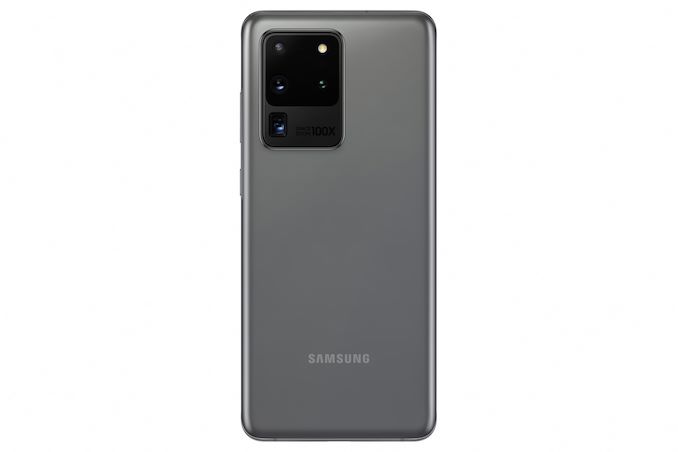
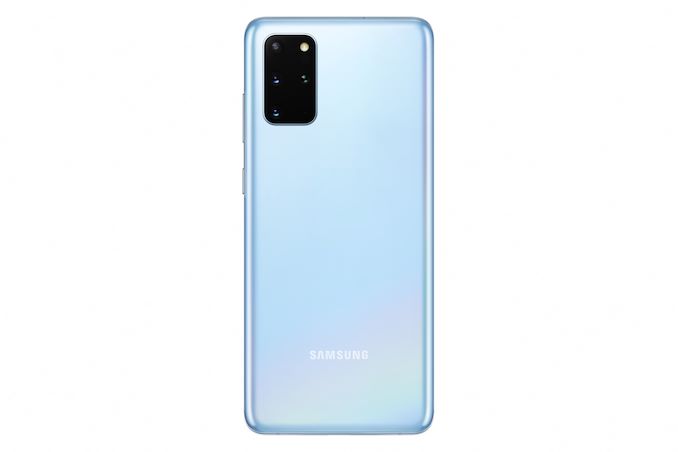

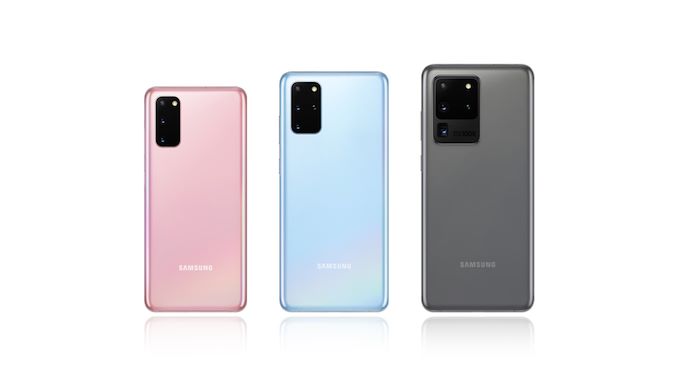

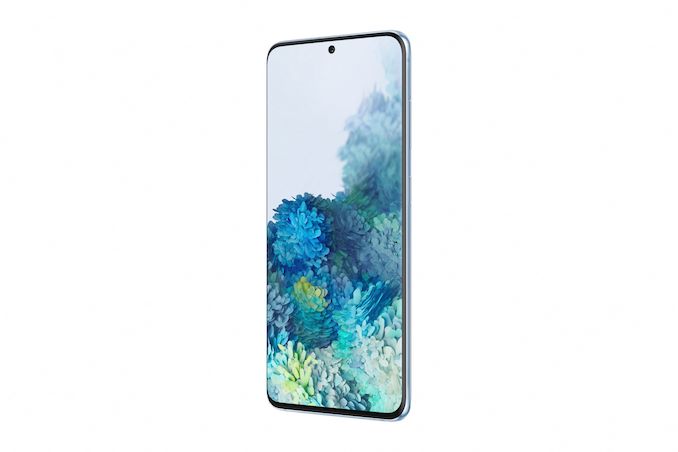
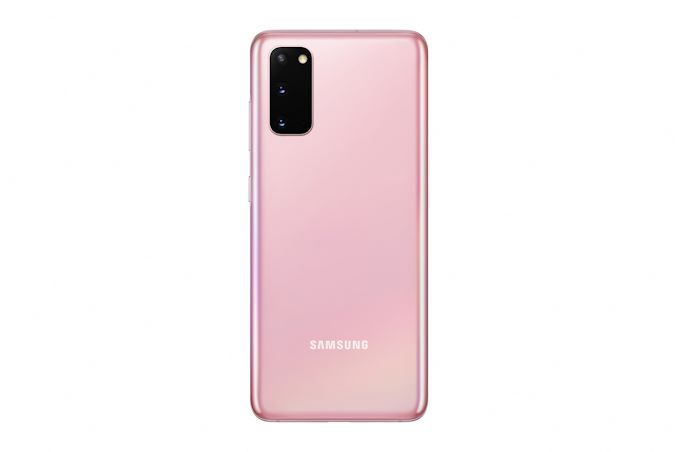
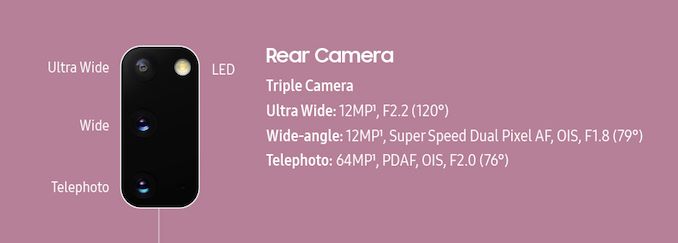
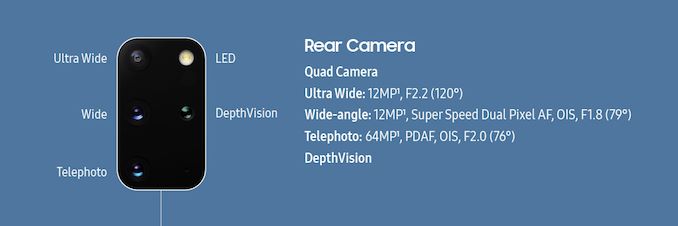
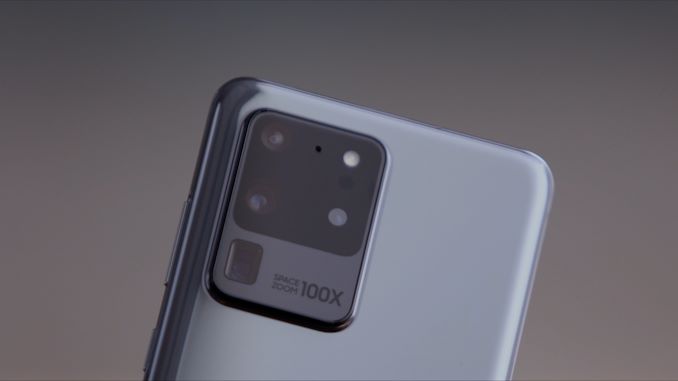
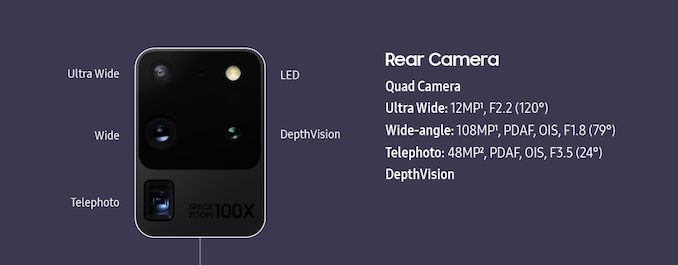
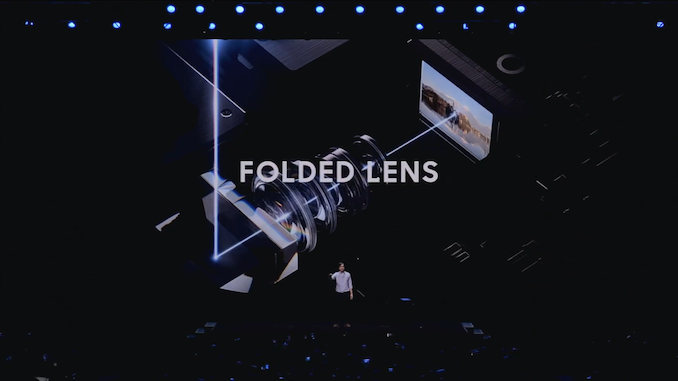


























172 Comments
View All Comments
neonoggie - Saturday, February 15, 2020 - link
I have an iPhone now and will be going back to android on my next upgrade. The limited functionality really only applies if you like to root your phones, which I have traditionally done. I mainly just wanted to give the iPhone a shot, and it’s fine, but not for power users.star-affinity - Wednesday, February 26, 2020 - link
Do you have an example of what classifies as power usage? I think iOS has become pretty capable as of late. The Shortcuts app offers some quite nice automation.Drkrieger01 - Wednesday, February 12, 2020 - link
Just a comment on the battery life... I work in corporate IT, also supporting mobile devices of both Android and iOS flavors. The Androids ALWAYS have better battery life, typically by at least one day. This has been the norm for the last 5+ years. The common issue with iPhones is apps not being updated for new iOS updates which cause app crashes and hangs which gobble up the battery in just hours, even on the newest 'X' models. Most of the time when these issues pop up we have to manually back up the phones, factory reset and restore - this doesn't always work to solve the issues. Just my $0.02...Featherinmycap - Thursday, February 13, 2020 - link
And I work in corporate IT too, and it just depends on the battery life. I've seen it go both ways. And I think you are making up the app crash part. Have no idea what you are talking about. Factory reset and restore? Never once and I am certain we have at least 500 iPhones in our shop.TheinsanegamerN - Saturday, February 15, 2020 - link
OTOH, we have 5+ year old iphones and 8+ year old ipads that still have usable battery life. I was recently brought an ipad 2 that still regularly made it through a school day on a charge.I dont see a whole lot of galaxy S3/4s out there anymore. It helps that apple has actual retail locations throughout much of the US, unlike literally any android manufacturer, so if a battery does begin to fail it can be replaced in a few hours by a professional complete with warranty, which is great for 99% of people.
Irish910 - Friday, February 21, 2020 - link
You must be high or something.jospoortvliet - Wednesday, February 12, 2020 - link
> everything that Samsung is touting as "new" is actually new for them and their products.Yeah, they are taking the Apple route in this regard. Apple will probably also introduce a periscope camera and 120hz screen in September and present them as new and innovative... I wont buy a phone until the front camera is hidden behind the screen, and probably foldable too.
While the innovation is somewhere else, yes - I like their new foldable - I find prices quite doable. Unlike with apple, most ppl dont pay this much for the Samsungs. Prices reliably and predictably go down - the S10 will be about 550 in August, as it always is. At that point, the comparison with Apple pricing which stays ridiculously high, is clearly in favor of Samsung.
liquid_c - Wednesday, February 12, 2020 - link
That's also true. Samsung's phones have the tendency to drop down in price pretty quick while iphones keep their value for much longer. I'm currently into the iOS ecosystem, with both an iphone and a watch and i'm more than satisfied with how they work together but the main reason i chose to stick with Apple is their enhanced support and Apple Pay (which, so far, has never been compromised). If Android/Samsung pay sees a wider adoption and if they wake up with their product support duration, i'd happily switch camps.loller86 - Wednesday, February 12, 2020 - link
Most else is better on Samsungs?BenSkywalker - Tuesday, February 11, 2020 - link
Curated isn't necessarily better, Nazi Germany's libraries were heavily curated, anyone think that made them better?No, I'm not comparing them, just pointing out that curated can be just as bad, if not worse, than non curated.